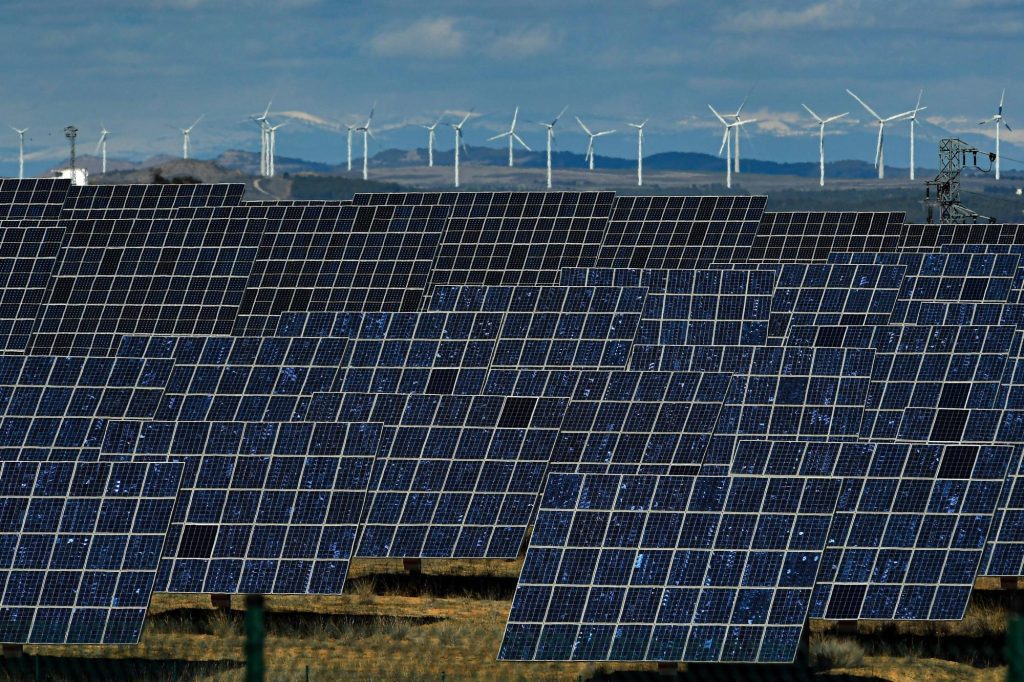By ISABELLA O’MALLEY (Associated Press)
According to a report from a London think tank called Ember, 2023 broke the record for renewable energy usage, which are energy sources that don't release harmful pollutants like carbon dioxide and methane. The report by Ember states that billions of people are using different types of energy every day, and a large amount of it is from renewable sources that don't release harmful gases like carbon dioxide and methane. Ember, a think tank in London, published a report on Wednesday indicating that 30% of the world's electricity came from clean energy sources last year, with the number of solar and wind farms rapidly increasing.
Last year, clean energy sources accounted for 30% of the global electricity production, with hydroelectric power being the largest contributor, although its output was affected by droughts in several countries due to climate change.
A report by Ember revealed that while hydroelectric dams were the biggest source of clean energy, droughts caused their output to drop in countries like India, China, North America, and Mexico due to the increasing severity of droughts caused by climate change. Research shows that climate change is leading to more rapid and severe droughts that are impacting the production of clean energy from hydroelectric dams..
Last year, there was a 2% increase in electricity usage, equivalent to Canada's annual consumption. This rise was partly due to the increased use of heat pumps for buildings, electric vehicles, and electrolyzers that extract hydrogen from water for energy, all of which are technologies aimed at combating climate change. heat pumpsThe increased demand for electricity was driven by factors such as the growing use of heat pumps, electric vehicles, and electrolyzers, which are technologies designed to address climate change. Last year, the biggest contribution to new clean energy came from solar power, which exceeded the addition of coal power by more than twice. Solar power has consistently been the fastest-growing source of electricity generation for 19 consecutive years, with a surge in installations towards the end of the year.The increased demand for electricity last year was largely met by more renewable energy installations, particularly solar power, which surpassed the addition of coal power by more than two times, making it the fastest-growing electricity source for the 19th year in a row. The report predicts an even larger increase in solar power in 2024. hydrogen China accounted for the majority of new renewable energy additions globally in 2023, contributing 51% of new solar power and 60% of new wind power. Meanwhile, China, the European Union, the United States, and Brazil were responsible for 81% of the new solar generation last year.
China, as the leading contributor to new renewable energy installations, added 51% of the new solar power and 60% of the new wind power globally in 2023, with the European Union, the United States, and Brazil also playing significant roles in new solar generation.
However, China also accounted for 55% of global coal generation, with coal providing 60% of China's electricity. According to the International Energy Agency, coal is the most carbon-intensive of all fossil fuels.
China, India, Vietnam, and Mexico drove the increase in electricity generated from burning fossil fuels, despite the urgent need to reduce emissions from such fuels to protect the Earth's climate.
The report highlighted that despite the growth in clean energy, fossil fuels still dominated global electricity production in 2023, leading to a 1% increase in global power sector emissions. International Energy Agency The International Energy Agency stated that coal is the most carbon-intensive among all fossil fuels.
The report warned that burning fossil fuels for electricity increased in 2023, particularly in China, India, Vietnam, and Mexico, despite the necessity to decrease emissions to safeguard the Earth's climate.
The report explained that some countries turned to coal for electricity generation when droughts caused their hydropower reservoirs to dry up. This serves as an example of a harmful cycle, where climate change leads to increased use of substances that contribute to climate change.
Despite the advancements in clean energy, fossil fuels remained the primary source of global electricity in 2023, resulting in a 1% rise in global power sector emissions. Scientists emphasized that even if all greenhouse gas emissions are drastically reduced today, the planet will continue to warm for years due to the existing level of pollutants in the atmosphere.
Experts anticipate that the world will use even more electricity by 2024. However, the forecast indicates that renewable energy production will grow at a faster rate. This may result in a 2% decline (equivalent to 333 terawatt-hours) in energy generated from fossil fuels.
____
The financial backing for The Associated Press’ reporting on climate and the environment comes from several private foundations. The AP is entirely responsible for all of its content. You can find AP’s standards for collaborating with charitable organizations, a list of supporters, and the areas of coverage funded at AP.org.









